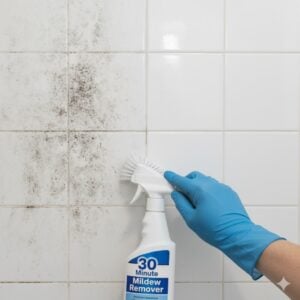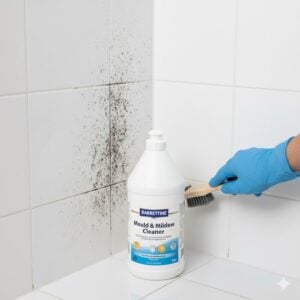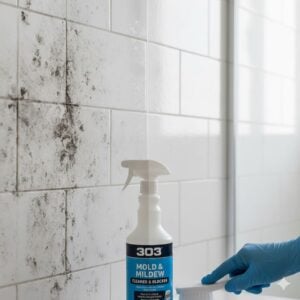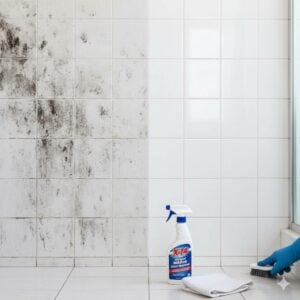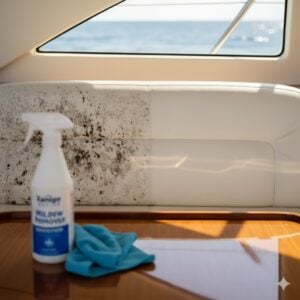You’re tidying up the room when suddenly, you spot dark patches on the edge of your wooden cabinet. Maybe it’s around the baseboard, or the back of a door. At first glance, you think it’s just dirt—but on closer look, it’s fuzzy, maybe damp. That’s not just a stain. It’s mold. And if you’re living in the UAE, especially in coastal cities like Dubai or Abu Dhabi, you’re not alone. Mold on wood is more common than most people realize.
Whether it’s your furniture, flooring, or built-in wardrobes, mold can silently damage wood and affect your health. In this guide, we at Bio-On will help you understand why mold shows up on wooden surfaces, how harmful it can be, how much it costs to remove, and—most importantly—how to get rid of it properly.
Table of Contents
Toggle1. Is Mold on Wood Common in the UAE?
Yes—mold on wood is a frequent issue in homes across the UAE, especially in areas with high humidity and limited ventilation. While the desert climate may seem dry on the surface, indoor environments—thanks to air conditioning, bathrooms without windows, and occasional leaks—can actually trap moisture inside wooden surfaces.
Wood is a porous material, meaning it can absorb moisture from the air or surrounding leaks. Once damp, it creates the perfect environment for mold to grow. You’ll often find it in places like:
- Wooden doors and frames
- Closets and wardrobes (especially those close to AC units)
- Baseboards and skirting boards
- Flooring and parquet sections
- Wooden furniture stored in damp corners
Many older villas and apartments in Dubai, Sharjah, or Ras Al Khaimah use wood fittings that, over time, become vulnerable—especially if small water leaks or condensation go unnoticed. So yes, mold on wood is common here, and unfortunately, it doesn’t go away on its own.
2. Is Mold on Wood Harmful to Health or the Material?
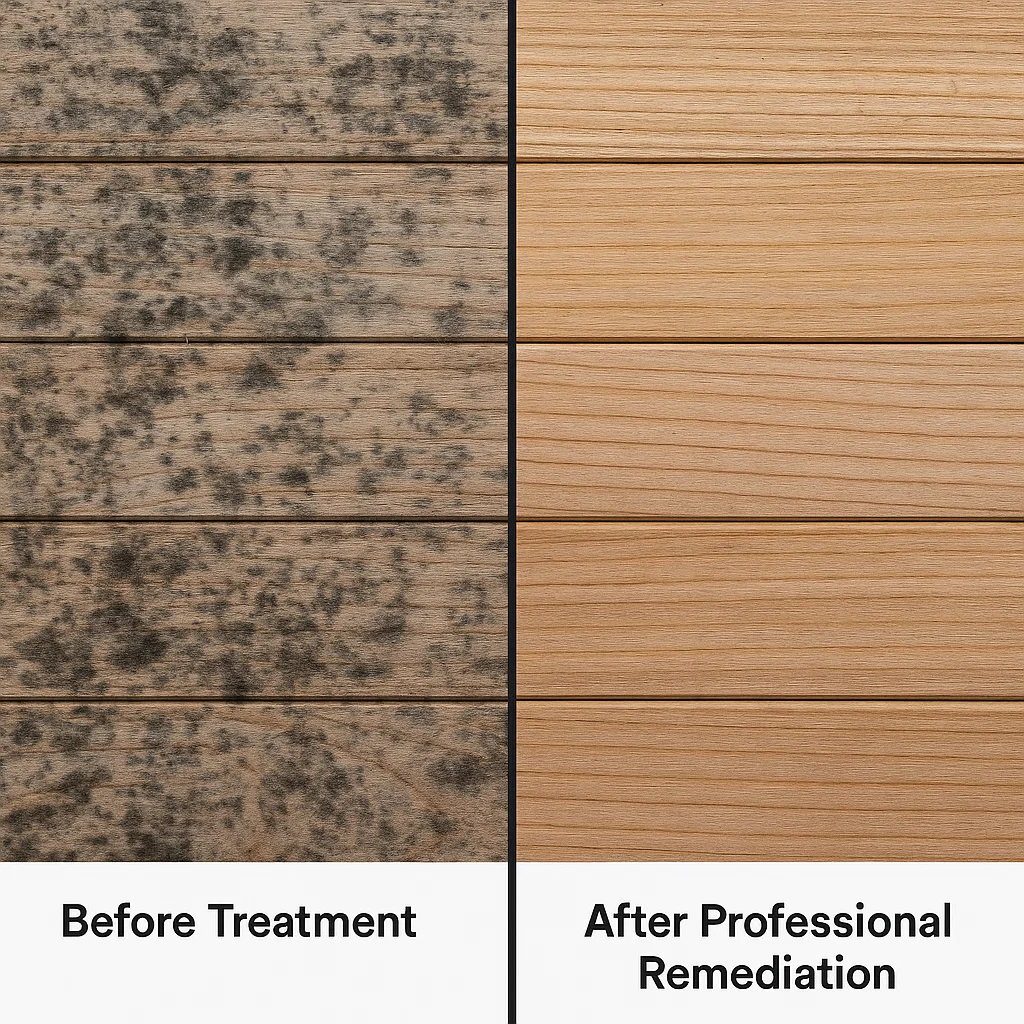
Short answer? Yes, to both. Mold isn’t just an eyesore. It can pose serious risks to your health and the condition of your property.
Health-wise, mold spores released into the air can cause respiratory problems—especially for children, the elderly, and those with asthma or allergies. Common symptoms include sneezing, coughing, itchy eyes, skin irritation, and in some cases, even headaches or dizziness.
For the material itself, mold weakens the wood over time. It feeds on organic material, which means it breaks down the fibers inside wooden surfaces. That leads to warping, discoloration, and soft or brittle areas. In some cases, you might also notice the paint or finish bubbling or peeling away—that’s often a sign that mold has already made its way underneath.
If you’re dealing with black, green, or fuzzy white spots on your wood, it’s not just a cosmetic problem—it’s a structural and hygiene issue that needs to be addressed before it spreads further.
3. Can Mold Be Removed from Wood? (Yes, But Carefully)
The good news is yes—mold can absolutely be removed from wood. But it’s not as simple as wiping it off with a wet cloth. In fact, using the wrong method can push the mold deeper into the wood grain or spread spores into the air, making things worse.
For small, surface-level mold (especially on sealed or polished wood), you might be able to use a gentle DIY approach:
- Mix equal parts white vinegar and water in a spray bottle.
- Spray the affected area and let it sit for 1 hour.
- Wipe gently with a microfiber cloth or soft brush.
- Allow it to dry completely, preferably in sunlight.
For deeper or stubborn patches, especially on raw wood like furniture backs or baseboards, sanding followed by disinfection may be needed. This involves removing a thin surface layer of the wood to fully eliminate the mold, then sealing it again with anti-fungal coating.
But beware: If the mold is black, spreading fast, or has a soft, wet appearance—it’s best to call professionals. At Bio-On, we use HEPA vacuum systems, eco-safe anti-mold sprays, and moisture meters to completely remove mold while protecting your wood. We also inspect the surrounding areas to prevent it from coming back.
So yes, it is possible to get mold out of wood—but how you do it matters a lot.
4. How Much Does It Cost to Remove Mold in UAE?
Mold removal costs in the UAE vary depending on the size of the affected area, type of wood, location, and how deep the contamination goes. But to give you an idea, here’s what you can expect:
| Volume of work | (AED) per sq.m./running meter | (AED) per 10.76 sq.feet / 3.28 linear feet |
|---|---|---|
| Up to 1 sq.m. | 35 per 1 sq.m./running m. | 35 per 10.76 sq.feet or 3.28 linear feet |
| From 1 to 3 sq.m. | 30 per 1 sq.m./running m. | 30 per 10.76 sq.feet or 3.28 linear feet |
| From 3 to 7 sq.m. | 25 per 1 sq.m./running m. | 25 per 10.76 sq.feet or 3.28 linear feet |
| From 7 to 10 sq.m. | 20 per 1 sq.m./running m. | 20 per 10.76 sq.feet or 3.28 linear feet |
| More than 10 sq.m. | Free inspection | Free inspection |
Other factors that affect cost include:
- Whether sanding or full replacement is needed
- Number of rooms affected
- Emergency service or night appointments
- If moisture or leak repair is included
Early detection is key—so the sooner you treat it, the lower the cost and damage. And if you’re unsure about the severity, just click the contact button on the right-middle of this post and we can provide a free initial consultation.
5. How to Prevent Mold on Wood from Coming Back
Once you’ve removed mold from wood, the next step is prevention. After all, nobody wants to clean the same moldy surface again two months later. The key to prevention is moisture control—because mold doesn’t grow unless there’s water, dampness, or humidity involved.
Here are some practical tips to keep your wooden surfaces mold-free in the UAE:
- Improve airflow: Open windows regularly or use exhaust fans in closed areas like kitchens, bathrooms, or storage rooms.
- Use dehumidifiers: Especially in high-humidity months, a compact dehumidifier can work wonders in keeping wood dry.
- Fix leaks early: Don’t ignore small water stains, dripping AC units, or leaky pipes near wooden structures.
- Seal the wood: If you have untreated wood, applying a mold-resistant sealant can add a protective layer.
- Keep furniture off walls: Leave a small gap between wood furniture and walls to improve ventilation and reduce condensation.
We also recommend a yearly inspection—especially in coastal areas or older properties—to catch any hidden signs early. It’s a small effort that can save you thousands in the long run.
Conclusion
Mold on wood might start small, but it can cause real problems—both to your health and your property. With the UAE’s indoor humidity and climate challenges, wooden doors, wardrobes, and furniture are all at risk. The good news? You don’t have to live with it.
We hope this guide gave you clear answers about why mold happens, how dangerous it is, what it costs to remove, and how to deal with it safely. Whether you’re managing a small patch on a shelf or a full closet infestation, the best step is to act quickly.
And if you’d prefer help from experts, just click the contact button on the right-middle of this post. We at Bio-On are ready to clean, treat, and protect your wooden surfaces—so you can breathe easier and live healthier.









